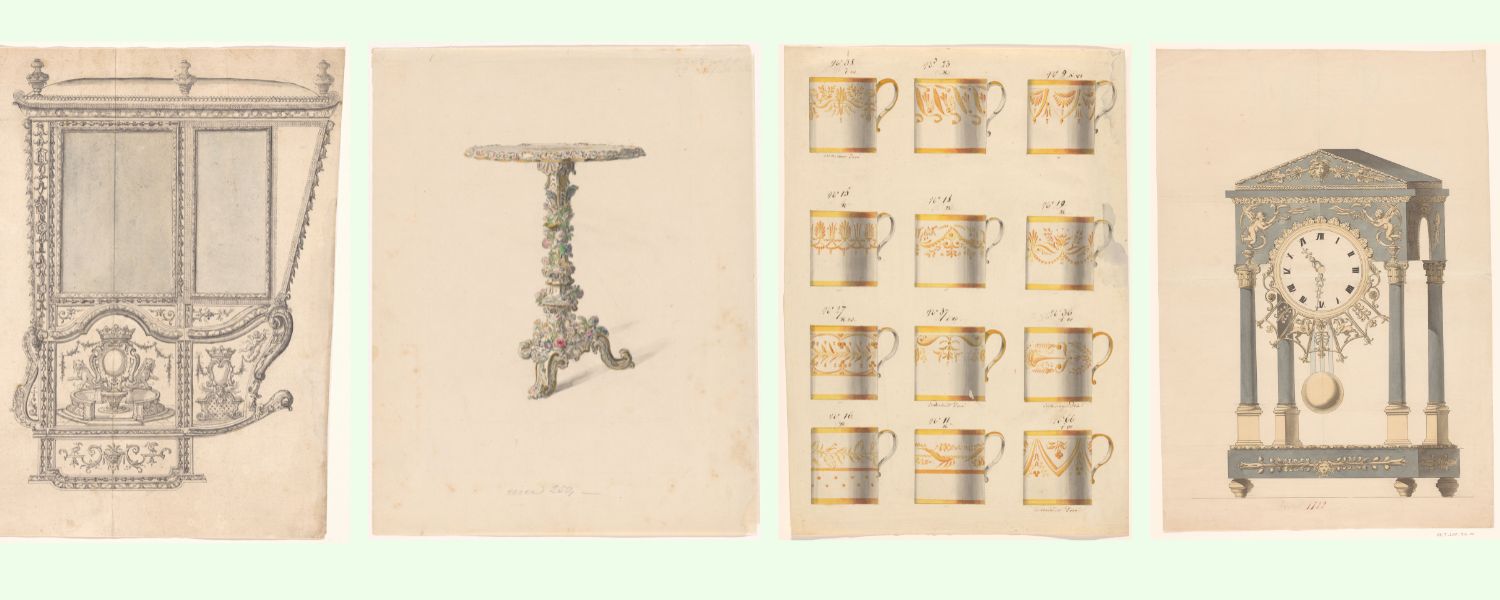Drawings were an important means of selling works of art and fine objects. They could represent a work of art that had been finished, or provide an image of what an object would look like when ordered. Drawings of objects were sent all over Europe, or brought along to annual fairs where dealers and agents from all parts of the continent converged. They were also shown to clients who visited a workshop or a dealer’s establishment. When in the eighteenth century Augsburg became the major European centre where silver services could be ordered, a sophisticated system of presentation drawings was developed. Silver dealers employed professional draughtsmen in economical fashion, ordering sketch-like images or fully finished presentation drawings according to individual requirements.

Left to right: Unknown, design for a coupé, c. 1700-1715. Unknown, a porcelain table, c. 1860-1880. Unknown, catalogue drawing of twelve gold-painted porcelain coffee cups, c. 1800. Unknown, mantel clock of marble and gilt bronze, c. 1810-1825.
Drawing for yourself
Drawings are still used by designers to sell their ideas. This is often done not with initial sketches, but with detailed renders, digital drawings. Although, there are also designers who do not use this, like Alex de Witte. He only makes his drawings for himself. And for making those drawings he has his own specific method, which he tells you more about in the video below.
